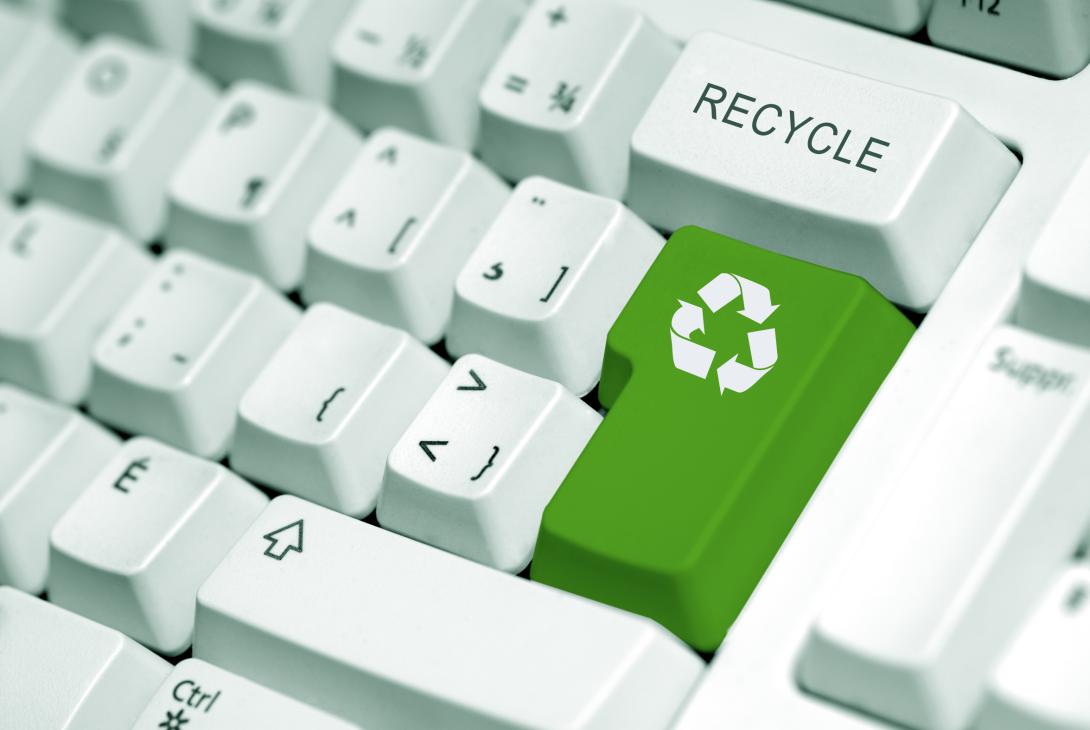Every waste, sustainability or environmental manager within the NHS is open to innovative solutions to their waste issues. Jerome Baddley and Clare Topping analyse a number of solutions that have been widely adopted in the health sector
There is no such thing as waste. Waste is a failure of imagination, or, if viewed commercially, a failure of the market. In the natural world all materials are recycled, reused and repurposed. Nature is exceptionally frugal. We do after all live within a closed planetary system with limited natural resources. There is an old Yorkshire expression: ‘Where there is muck there is brass’. Indeed all waste has inherent value and the waste management sector is an exceptionally important part of the UK low carbon and environmental goods sector.
Waste processing, energy from waste and biomass in the UK was identified in 2015 as employing almost 150,000 staff, with a turnover of £54 billion, almost 50 per cent of the low carbon and environmental goods sector. With the NHS as the UK’s largest procurer of goods and contributing 10 per cent of GDP, we have a huge role to play in addressing UK waste and driving a more circular, resource efficient economy.
Commercial pressures and policy developments over the coming year will also bring NHS waste treatment under closer scrutiny. The decision by China to no longer import plastic waste is likely to increase disposal costs; the development of the UK Waste and Resources Strategy will challenge our approaches to resource use; and there is increasing public interest in plastics waste, climate change and air pollution.
Focusing on circular economy, waste reduction and material replacement solutions in product and service specification, as a procurement challenge, is likely to offer the most effective long‑term, affordable and sustainable option.
The Safe Management of Healthcare Waste
The starting place for all NHS Waste Management is HTM07-01 – The Safe Management of Healthcare Waste, and the creation of a risk assessment and appropriate waste policy. However, waste management and reporting is also integrated into mandatory Sustainable Development Management Plans (SDMPs). The SDU recently produced a new resource to support NHS organisations to develop their SDMPs: SDAT (The Sustainable Development Assessment Tool). Waste is covered as one of 10 key themes under the heading ‘Sustainable Use Of Resources’ to underline the fact that waste is potentially unsustainably managed resource.
NHS providers currntly produce at least 224 million tonnes of solid waste a year. This is not including packaging waste, from NHS supply chain or prescription goods packaging disposed at home, or primary care. The waste arising from care and nursing homes was also estimated in 2012 to be over 450 million tonnes each year.
The last ten years have seen major changes in waste management and segregation for NHS hospitals. Gone are the days when if it was clinical it went into a yellow bin, if not it was put into a black bag. Now clinical waste is segregated into a myriad of colours: purple, yellow, blue, red, orange and yellow and black stripes – depending not only on waste type, but also potential infection status of the patient. For non‑clinical waste there are recycling and reuse targets – resulting in further segregation requirements, with particular streams for confidential and other hazardous waste.
Nationally this improved approach to segregation has shown some real results, 85.5 per cent of NHS provider waste now avoids landfill. We are successfully moving waste up the waste hierarchy, though the new solution is often incineration or Energy from Waste (EfW). While this is certainly good progress, it may not be sustainable in the longer term to continue to burn it in EfW facilities. While plastic may only contribute 10-15 per cent by weight of commercial waste it can represent 30-40 per cent of the calorific value. As we get better at reducing and recycling other materials, EfW facilities are increasingly plastic fired power stations.
For Northampton General Hospital NHS Trust (NGH), in common with a large number of acute trusts across the country, this increased segregation has presented a number of issues; space, infection prevention and control, education and finance. However, it also requires a degree of pragmatism to ensure that legal requirements are met. For a trust like NGH, that has occupied the same site for over 250 years, having sufficient space represents a major challenge. Accommodation is needed for bins on the wards, in clinics and in public areas, as well as space for collation and distribution or storage for reuse.
The waste management operations of trusts will differ depending on size, resources and historical practices. Best practice involves having a dedicated team to collect, collate and manage the waste and bring it to a central area for onward transport for disposal. Very few hospitals in the UK still incinerate waste on site. Support from infection prevention and control teams is vital.
Having an enthusiastic waste guru on this team who comes to interdisciplinary waste meetings and helps audit on wards has been key to NGH ensuring compliance and getting initiatives embedded in the trust. They can ensure that the correct messages are given in all training and during other ward audits.
Reverse vending and other innovations
Increasingly creative and innovative companies are finding ways to create a market for organisations’ waste. Kettering General Hospital worked with the company Flute Upcycling to exchange the hospital’s cardboard waste for cardboard office furniture. Reverse vending in hospitals like Barts incentivises return of plastic bottles. The Barts initiative has particularly supported return and recycling of haemodialysis acid bottles saving around £13,000 per year. However, in Bradford they have gone a step further and removed the need for these bottles entirely, through designing a central delivery system for the fluids into tanks saving £23,000 per year.
The co-operation of suppliers and waste management companies is key. As many companies manage waste from more than one hospital, whether through separate contracts or through collaborative tenders, then there are potential wider collaborations to be gained using economies of scale with low value high volume wastes. For example, NGH is in a collaborative contract with Kettering General Hospital, but the same domestic and clinical waste companies manage a further three hospitals in close proximity.
Specifying wider KPIs in the contract with the waste provider and including an annual improvement plan, can leverage both an improved day to day service and ensure ongoing support for staff engagement such as posters, information boards, awareness days and competitions. Every waste, sustainability or environmental manager within the NHS is open to innovative solutions to their waste issues, but usually they require an investment of time, money and space. Despite this there are a number of solutions that have been adopted widely across the NHS.
Examples include: baling/compacting – most trusts can receive an income from baling their card; reusable sharps bins – can prevent tens of tonnes of single use plastic being incinerated with 80 per cent lower lifecycle carbon emissions; recycling of X-Rays to recover silver; bag to bed systems – removing clinical waste bins from patient areas, improving the patient environment; food waste collections or food digesters, replacing macerators, cutting fats going to sewers; coffee cup discounts for reusable cups; and reuse websites, such as the widely used WarpIt scheme ensure unused goods find a useful home.
However, the relatively small size of individual organisations often limits the viability of some schemes – without bulk storage, collections of segregated waste can become prohibitively expensive if not impossible. Local STP or NHS-wide schemes may be the answer to this.
A proactive approach
Whilst innovations grab the headlines, getting the basics correct, regular auditing, engagement and training can deliver the greatest savings. At Northampton a high degree of compliance, costs reduction and sustainability has been assured through weekly audits, attendance at ward and theatre meetings; particularly face to face work with healthcare assistants, domestic and nursing staff.
Northampton had always baled card and separated out metal to receive the maximum rebate, as well as providing mixed recycling for several years, however, recycling levels had remained static. In the last two years however, segregated recycling weights have increased by more than 40 per cent through taking a more proactive approach. Engaging with staff and harnessing the enthusiasm that many have for recycling and doing the right thing for the environment.
The SDU carried out a staff survey in 2017, to be published later this year. The headline from the 6,200 responses was that overwhelmingly (98 per cent) NHS staff see the importance of environmental sustainability in the NHS and want to support financial savings. The 1.4 million NHS staff are keen to be engaged to address these challenges, whether it be through segregating waste or helping to design waste out of healthcare entirely.
Our natural environment, economy and society are three critical life support systems. Ensuring a circular economy, reducing waste and then dealing with any residual waste in the most environmentally benign way saves money, creates jobs and protects health. The eventual goal of course should be a zero waste NHS.





